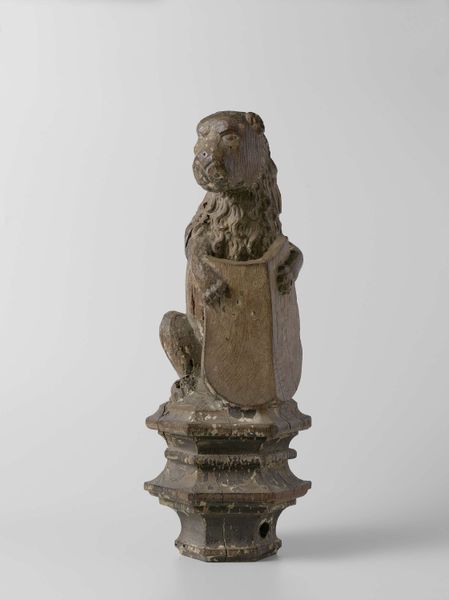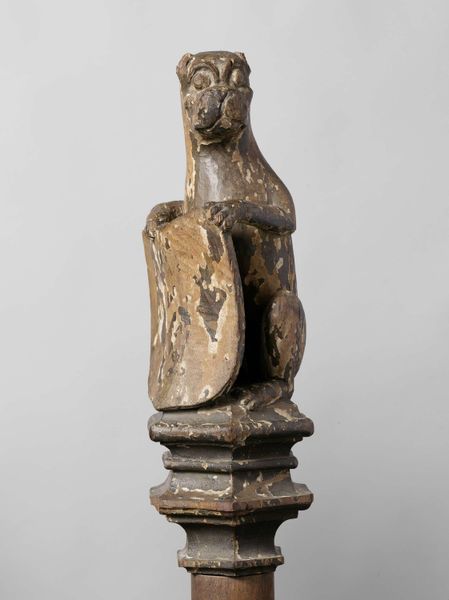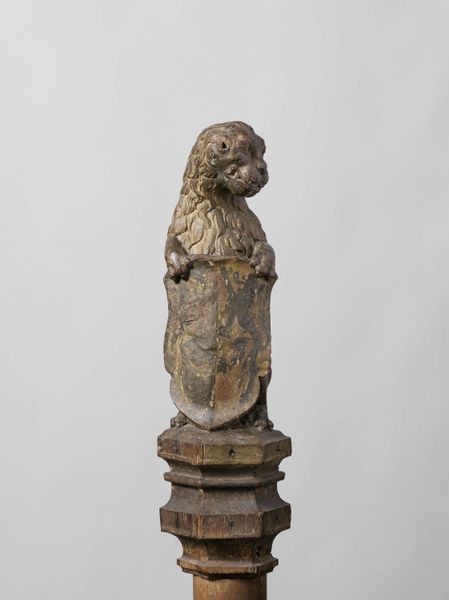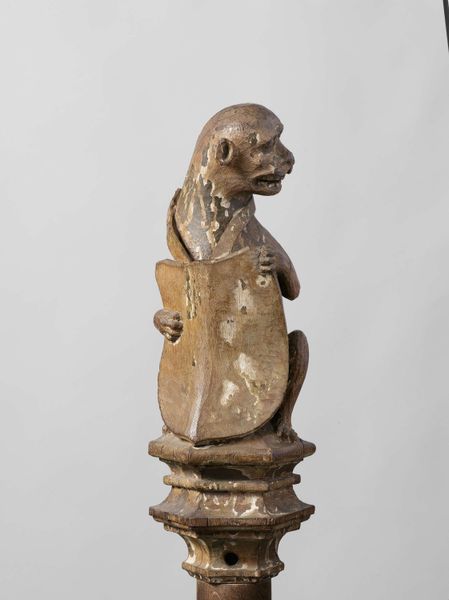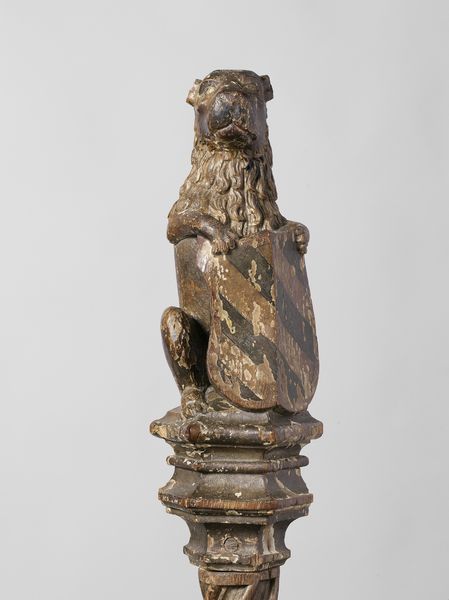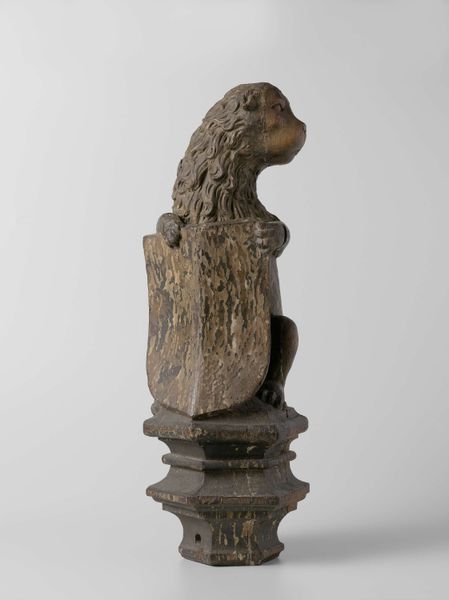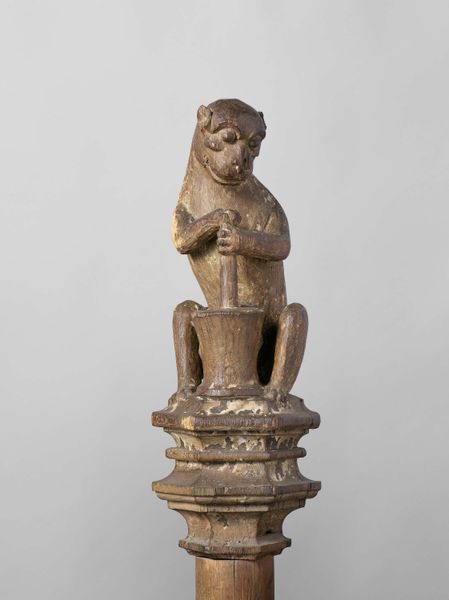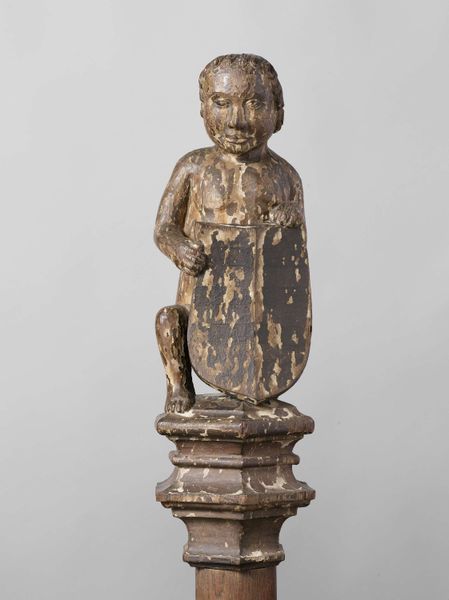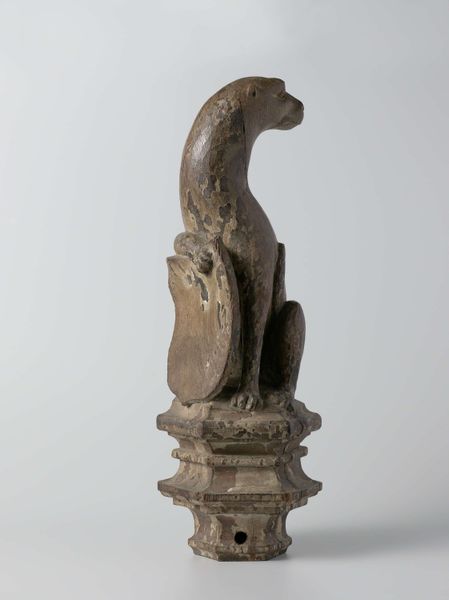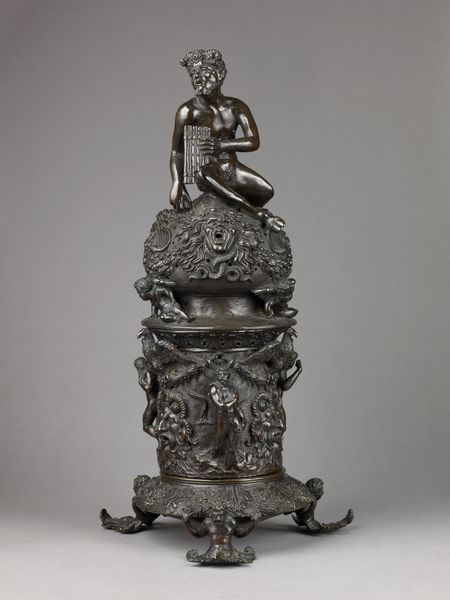
Dog Supporting an Escutcheon, from the Top of a Balustrade or the Backrest of the Stadholder’s Chair in the Rolzaal in the Hof van Holland, The Hague 1511
0:00
0:00
carving, wood
#
medieval
#
carving
#
sculpture
#
figuration
#
wood
Dimensions: height 55.5 cm, width 17 cm, depth 17 cm
Copyright: Rijks Museum: Open Domain
This wooden dog supporting an escutcheon was carved by Joost Janszoon for the Hof van Holland in The Hague. We can imagine this stern-looking dog was part of the balustrade or the backrest of the Stadholder's chair, a symbol of power and authority in the Dutch Republic. Dogs, often associated with loyalty and vigilance, were popular motifs in heraldry and aristocratic imagery of the time. The escutcheon, or shield, was a key element in displaying coats of arms, asserting lineage and status. The Dutch Republic was a unique political entity in the 17th and 18th centuries. It was dominated by powerful families and wealthy merchants. Stadholders were elected officials, but they often came from the House of Orange, making the position almost hereditary. The Hof van Holland was the highest court in the province of Holland, a key institution of governance. The Stadholder's chair, adorned with carvings like this one, visually reinforced his authority and the power of the court. By exploring archival records and studying the history of Dutch political institutions, we can better understand how art was used to uphold and legitimize power in the Dutch Golden Age.
Comments
No comments
Be the first to comment and join the conversation on the ultimate creative platform.
